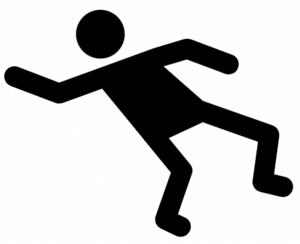See This Report on Dementia Fall Risk
See This Report on Dementia Fall Risk
Blog Article
Little Known Questions About Dementia Fall Risk.
Table of Contents6 Easy Facts About Dementia Fall Risk ExplainedNot known Details About Dementia Fall Risk The Ultimate Guide To Dementia Fall Risk5 Easy Facts About Dementia Fall Risk Described
A loss risk evaluation checks to see just how most likely it is that you will drop. The evaluation normally includes: This consists of a series of inquiries concerning your general health and if you have actually had previous falls or troubles with balance, standing, and/or walking.Interventions are referrals that may reduce your danger of dropping. STEADI includes 3 steps: you for your threat of falling for your danger elements that can be enhanced to try to protect against drops (for example, balance problems, impaired vision) to lower your danger of dropping by making use of effective strategies (for instance, giving education and learning and sources), you may be asked several inquiries including: Have you fallen in the previous year? Are you stressed about falling?
You'll sit down once more. Your service provider will certainly inspect the length of time it takes you to do this. If it takes you 12 secs or more, it might mean you are at greater risk for a fall. This test checks strength and balance. You'll being in a chair with your arms crossed over your chest.
The placements will certainly get more difficult as you go. Stand with your feet side-by-side. Relocate one foot midway onward, so the instep is touching the huge toe of your other foot. Move one foot totally before the various other, so the toes are touching the heel of your other foot.
Facts About Dementia Fall Risk Revealed
Most falls occur as a result of several contributing aspects; as a result, handling the danger of falling starts with recognizing the variables that add to drop danger - Dementia Fall Risk. A few of the most pertinent risk elements consist of: History of prior fallsChronic medical conditionsAcute illnessImpaired gait and balance, lower extremity weaknessCognitive impairmentChanges in visionCertain risky drugs and polypharmacyEnvironmental variables can likewise enhance the risk for falls, including: Insufficient lightingUneven or harmed flooringWet or unsafe floorsMissing or damaged hand rails and grab barsDamaged or poorly equipped tools, such as beds, wheelchairs, or walkersImproper use assistive devicesInadequate guidance of individuals living in the NF, consisting of those who show hostile behaviorsA effective loss threat administration program calls for a thorough scientific assessment, with input from all participants of the interdisciplinary group

The treatment plan ought to likewise consist of interventions that are system-based, such as those that advertise a risk-free atmosphere (appropriate lighting, hand rails, grab bars, etc). The efficiency you could try here of the interventions ought to be examined occasionally, and the treatment plan revised as essential to mirror changes in the autumn threat analysis. Executing a fall threat management system using evidence-based ideal method can minimize the prevalence of falls in the NF, while restricting the possibility for fall-related injuries.
Examine This Report about Dementia Fall Risk
The AGS/BGS standard advises evaluating all grownups matured 65 years and older for loss danger each year. This screening contains asking patients whether they have dropped 2 or even more times in the past year or looked for clinical interest for an autumn, or, if they have actually not dropped, whether they feel unstable when walking.
People who have fallen as soon as without injury should have their equilibrium and stride reviewed; those with stride or balance irregularities should get added analysis. A history of 1 loss without injury and without stride or equilibrium problems does not warrant additional assessment beyond continued annual fall danger screening. Dementia Fall Risk. An autumn threat analysis is required as part of the Welcome to Medicare assessment

Rumored Buzz on Dementia Fall Risk
Documenting a drops history is one of the high quality indications for fall avoidance and administration. copyright drugs in certain are independent predictors of falls.
Postural Read More Here hypotension can frequently be reduced by lowering the dose of blood pressurelowering drugs and/or quiting medicines that have orthostatic hypotension as a side effect. Use above-the-knee support hose pipe and copulating the head of the bed elevated might also minimize postural reductions in high blood pressure. The recommended aspects of a fall-focused checkup are displayed in Box 1.

A TUG time higher than or equivalent to 12 secs recommends high autumn threat. Being not able to stand up from a chair of knee height without utilizing one's arms suggests enhanced loss danger.
Report this page